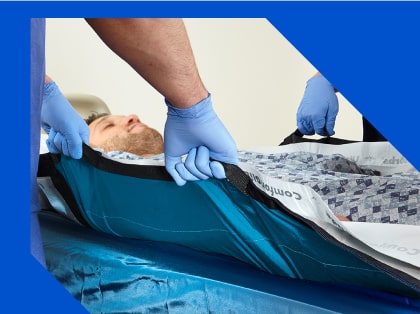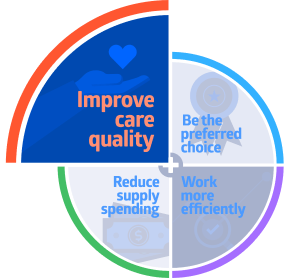How education and products impact pressure injury outcomes
Advocating for the right repositioning and offloading products helps improve outcomes.
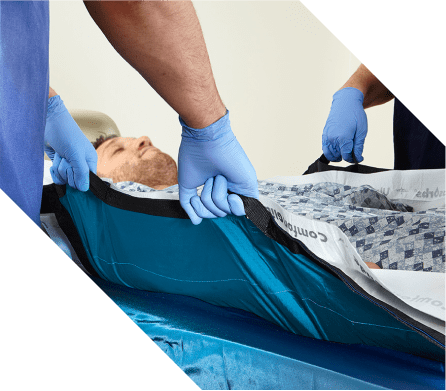
Insight
At one multifacility healthcare organization, the Medline ComfortGlide® Turning and Repositioning System—turning sheet, drypad and wedges—was used to help reduce the risk of pressure injuries. The products helped frontline staff safely turn and reposition patients and manage moisture. In 2019, with no input from clinicians, a decision was made to replace the ComfortGlide system of products with a single underpad that was less expensive but soon proved to be less effective at keeping people safe. The result was “a problem,” says John VanSchaick of Medline’s Skin Health team.
Cutting costs meant clinicians were forced to use a product that made it more difficult for staff to do their job, resulting in a 75% increase in pressure injuries. By tracking outcomes, clinicians were able to show how the use of a repositioning and offloading solution could positively impact pressure injuries, providing a data driven reason to convert back to the ComfortGlide solution. With this data, the intensive care units switched back to the ComfortGlide system and saw a dramatic reduction in pressure injury rates.
This case study reinforces the importance of focusing on a prevention-first strategy and engaging clinicians to make the right product choices that help support best practices and improve outcomes.
Challenges
- Pressure injuries rose dramatically within a year after replacing the ComfortGlide Turning and Repositioning System with a less expensive underpad
- Clinical staff felt frustrated because they weren’t consulted on the change
- The less expensive underpad made it hard for clinicians to follow prevention best practices; some staff gave up trying
Actions
- The clinical team tracked pressure injury rates in ICUs and non-ICUs when ComfortGlide was used in 2018, when the alternative underpad was used in 2019, and again when ICUs went back to ComfortGlide
- The three-year study was presented to facility leadership, and ICUs returned to ComfortGlide
Results
Improve care quality:
- ICUs saw a dramatic drop in Hospital Acquired Pressure Injury (HAPI) after switching back to the ComfortGlide system
- Non-ICU departments that continued to have access to both the ComfortGlide and alternative, less expensive product continued to see a rise in HAPIs
Challenges
Hospital acquired pressure injuries (HAPIs) are an ongoing challenge for caregivers. They’re painful for patients and costly for providers, and they can develop in as little as one hour. As a CMS “never” event, hospitals are incentivized to reduce HAPIs. Skin and wound care experts turn to the National Pressure Injury Advisory Panel (NPIAP) for detailed evidence-based prevention and treatment guidelines and recommendations. Two of these recommendations include repositioning and offloading fragile skin and managing moisture.
Evidence-based best practices combined with the right system of products drives positive outcomes. But without the right tools, it’s hard for clinicians to provide the best patient care consistently and accurately. When facilities base purchasing decisions solely on financial outcomes, clinical outcomes can suffer.
In one large multifacility health system, their Value Analysis Committee needed to cut supply spending. They made the decision to replace the comprehensive ComfortGlide Turning and Repositioning System—turning sheet, underpad and wedges—to a single, less expensive, basic underpad, whose salesforce claimed it could act as an equal replacement.
Clinical staff was frustrated that they hadn’t been consulted on the decision to switch out the products and had trouble following evidence-based best practices with just an underpad.
“It was a problem,” VanSchaick says. “The decision-makers had been told the underpad could do everything when, in fact, it actually caused injury because it was so abrasive on the patients’ skin and it wasn’t designed to be a turning device like the ComfortGlide sheet. The nurses felt they were slipping backward in patient care. The cheaper underpad didn’t work, but the clinicians were stuck with it.”
Removing the ComfortGlide system of products–which staff at the facility had been using since 2015–and relying on a single product not built for safe patient handling and repositioning put added strain on caregivers, who no longer had the proper tools needed to accurately reposition patients and prevent skin breakdown.
“ComfortGlide encourages better patient repositioning and offloading,” VanSchaick explains “That’s where the facility lost on both clinical and financial outcomes. The larger, cheaper underpads were not meant for turning patients, so clinicians were using improper ergonomics to move them. Some nurses simply gave up because it was so hard to do. Or they just didn’t do it as often as they should have to keep patients safe.”
Typically, when cost of treatment and CMS fines increase, facilities lose any expected savings. “The clinical outcomes were negative, and the number of stage 3 pressure injuries they were responsible for financially was significant,” says VanSchaick. “They likely lost any economic benefit they thought they’d get.”
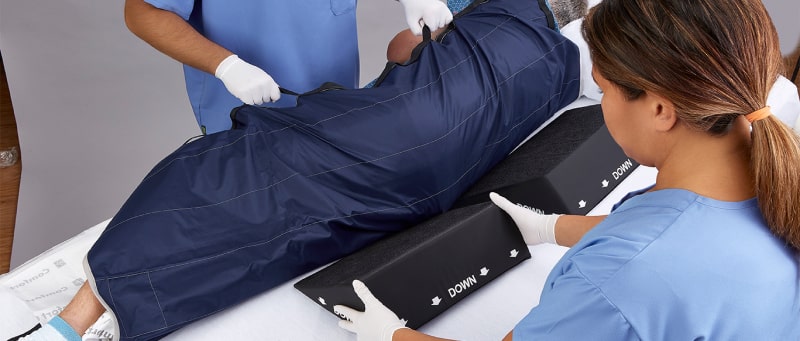
Caregivers using the ComfortGlide system to safely turn and reposition a patient.
Actions
A group of clinicians at the facility decided their voices needed to be heard. Because the facility conducts annual prevalence and incidence studies, they were able to launch a quality improvement project to determine if this change in product had an impact on HAPIs. They pulled data from 2018, when the ComfortGlide system was used in ICU and non-ICU departments. Then, they tracked the pressure injury rates for 2019 after the switch to the cheaper one-product alternative. In 2020, the ICUs had opted to go back to the ComfortGlide system, but the non-ICUs still had the option of the less expensive underpad. All underpads were “breathable” per the manufacturer and compatible with low air loss support surfaces.
Coordinating with the organization’s Value Analysis Committee, inpatient skin and wound team, leadership and bedside nursing, pressure injury rates were tracked in five adult ICU units and one pediatric ICU unit, 18 adult non-ICU units and one pediatric non-ICU unit, over the course of three years. There were no changes in protocols, only in products, indicating that product choice was the variable that most likely impacted outcomes.
Results
Medline’s Vice President of Health Economics Margaret Halstead likes to say, “The most expensive therapy is the one that doesn’t work.” In this case, that statement was clearly brought to life.
Tracking patient outcomes when changes were made to moisture management and repositioning and offloading products allowed the clinicians to present compelling data. After reviewing results from the clinicians’ study, the hospital system’s intensive care units reinstated the ComfortGlide system of products in FY2020. HAPI rates proceeded to drop nearly 40%.
Non-ICUs, however, continued to have the option of the single underpad product, and their pressure injury rates continued to go up. So, if they had the option, they were choosing the less expensive option. Was it based on department spending decisions? Possibly. Or it may have been that the cheaper product was at closer proximity to the care. Or a combination of both. Either way, patients possibly suffered because of the decision.
Fortunately, ICU department heads decided to bring back the comprehensive ComfortGlide system before their facilities were overcome with patients suffering from COVID-19. Having the right tools enabled clinicians to do their job and help keep patients safe during this time.
The data demonstrated to leadership the importance of understanding that products impact outcomes, and that it’s crucial to consult with clinical staff. Additionally, leadership realized that having the right products plays a significant role in helping caregivers do their jobs safely and following evidence-based best practices. ComfortGlide was developed specifically to make it easier to boost, turn, move and reposition patients safely, lowering the risk for HAPIs and protecting caregivers from musculoskeletal injuries. One nurse noted, “Just having ComfortGlide in our facilities drives better clinical habits for us.”
“In order to reduce pressure injury occurrence, you have to move patients more often. If you move patients more often, you need the tools in place so they can safely do that. If you give nurses the correct tools, they’ll be able to follow safety protocols,” says Drew Phalen, Medline Director of Product Management, Repositioning and Offloading.
When it comes to reducing pressure injuries, it’s important for frontline staff to have the proper tools and strategies. With healthcare facility budgets stretched thin, and reimbursement regulations top of mind, it’s no surprise that the Value Analysis Committees are pressured to cut costs. However, when leadership tries to impact financial outcomes without looking at clinical outcomes, the cost savings disappear.
VanSchaick sums up the case study: “When you find something that’s effective at improving patient care and driving evidence-based best practices, you can certainly fine-tune it, but you can’t get rid of it. It needs to become the new norm. You don’t mess with a good thing.”
References:
- OSHA. Occupational Safety and Health Administration. Safety and Health Topics. Healthcare. Safe Patient Handling. Available at: https://www.osha.gov/SLTC/healthcarefacilities/safepatienthandling.html. Accessed June 17, 2019
Please complete the form to receive additional content when published.
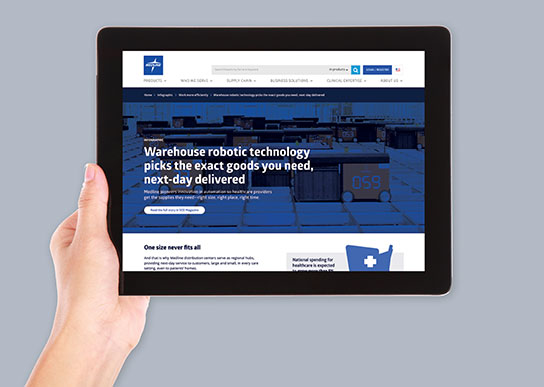
References
- Learn more about abaqis here.
- Discover more ways we’re helping providers make healthcare run better.
- See abaqis in action.
How can we help your business run better?
Contact us to learn more
